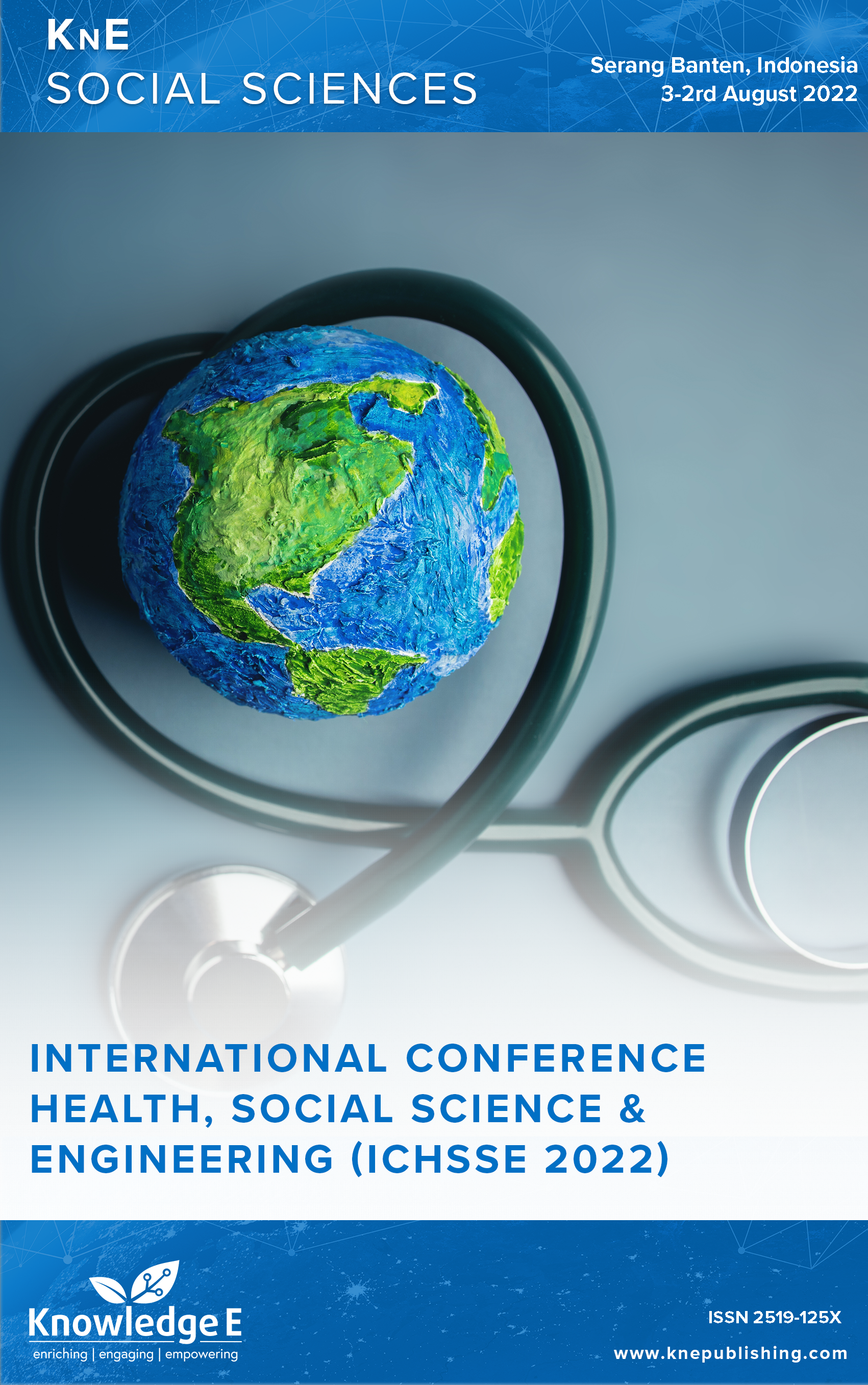Determination of Policy Development Priorities in Integrated Waste Management Site at Bantargebang Bekasi
DOI:
https://doi.org/10.18502/kss.v8i14.13833Abstract
The garbage problem from DKI Jakarta in the integrated waste management (IWM) site at Bantargebang Bekasi is still interesting for study. The existing studies generally relate to water, soil, air pollution, social conflict, institutional, and area expansion. This study focuses on determining priority strategies for policy development at the IWM Site. The analytical hierarchy process (AHP), analysis method was used to measure priority options regarding integrated Jakarta waste management policies at the IWM site. They collected data by interviewing experts, primary data sources, and other information from various related agencies. The existing condition performance graphs and dynamic sensitivity results show that alternative strategies for improving human resources are a priority for policy development at the IWM Site. The next priority in a row is facilities and infrastructure development, waste utilization management regulations, and increased stakeholder cooperation and coordination. The conclusion is that the policy to raise human resources is most relevant to the current needs of the implementing management unit of the IWM site. It is recommended that further studies related to risks and disasters from the existence of technology-based waste processing have the potential to cause new problems from environmental and social aspects.
Keywords: AHP, alternative priority, human resources, integrated waste management
References
[2] Sukwika T. ”Determination of key factors for sustainable TPST-Bantargebang management using MICMAC Approach.” Jurnal Tataloka 2021;23(3):1-13. doi: 10.14710/tataloka.23.4.524-535.
[3] Chen X, Geng Y, Fujita T. ”An overview of municipal solid waste management in China.” Waste Manage. 2010;30(4):716-724. doi: 10.1016/j.wasman.2009.10.011.
[4] Panjaitan HM, Djaenuri HA, Moenek R, Sinurat M. ”Collaborative governance of waste management in the province DKI Jakarta,” VISIONER: Jurnal Pemerintahan Daerah di Indonesia. 2019;11(4):505-515. doi: 10.54783/jv.v11i4.222
[5] Sukwika T, Sukamdani NB, Maharani MDD. ”Analysis of two dimensional sensitivity as decision support alternative waste management in TPST Bantargebang.” Berkala Sainstek. 2022;10(2):68-76. doi: 10.19184/bst.v10i2.31293
[6] Mayangkara AP. ”Evaluation of waste management policies at the mount stage landfill in Tuban regency.” Jurnal Penelitian Administrasi Publik. 2016;2(2):427-444.
[7] Tasrin K, Amalia S. ”Evaluation of solid waste service performance in the Bandung Raya metropolitan area.” J Borneo Admin. 2014;10(1):35-58.
[8] Putri RA, Bakar Y, Mufti D. ”Analysis of the community-based waste management system using the method AHP (analytical hierarchy process).” Jurnal Fakultas Teknik Industri. 2013;1(3):1-10.
[9] Noviana L, Sukwika T. ”Utilization of organic waste as environmentally friendly compost fertilizer in Bhaktijaya village, Depok.” Pengabdian Untukmu Negeri. 2020;4(2):237-241. doi: 10.37859/jpumri.v4i2.2155.
[10] Zhang H, Matsuto T. ”Comparison of mass balance, energy consumption and cost of composting facilities for different types of organic waste.” Waste Manage. 2011;31(3):416-422. doi: 10.1016/j.wasman.2010.09.010.
[11] Sasaki S, Araki T, Tambunan AH, Prasadja H. ”Household income, living and working conditions of dumpsite waste pickers in Bantar Gebang: Toward integrated waste management in Indonesia.” Resources, conservation and recycling. 2014;89:11-21. doi: 10.1016/j.resconrec.2014.05.006.
[12] Monice M, Perinov P. ”Analysis of the potential of waste as raw material for a waste power plant (PLTSa) in Pekanbaru.” SainETIn: Jurnal Sains, Energi, Teknologi & Industri. 2016;1(1):9-16. 2016.
[13] Thohiroh NA, Mardiati R. ”Design of a waste power plant (PLTSa) using a viable combustion technology (Case study: TPST Bantargebang).” in Prosiding-Seminar Nasional Teknik Elektro UIN Sunan Gunung Djati Bandung, 2018, pp. 212-224.
[14] Eriksson O, Bisaillon M, Haraldsson M, Sundberg J. ”Integrated waste management as a mean to promote renewable energy.” Renewable Energy. 2014;61:38-42. doi: 10.1016/j.renene.2012.04.024.
[15] Anderson DR, Sweeney DJ, Williams TA, Camm JD, Cochran JJ. An introduction to management science: quantitative approach. Cengage learning, 2018.
[16] Taylor B, Introduction to management science. Jakarta: Penerbit Salemba Empat; 2014.
[17] Saaty TL, Vargas LG. ”The seven pillars of the analytic hierarchy process.” in Models, methods, concepts & applications of the analytic hierarchy process: Springer, 2012, pp. 23-40.
[18] Rimantho D, Tamba M. ”Proposed solid waste management strategy at the Burangkeng Bekasi final disposal site with a approach SWOT and AHP.” Jurnal Ilmu Lingkungan. 2021;19(2):383-391. doi: 10.14710/jil.19.2.383-391.
[19] Magdalena H, Santoso H, Rahayuningsih H, Rochmayani K. ”The decision support system model determines the landfill in Pangkalpinang.” CogITo Smart J. 2019;5(1):22-34.
[20] Sukwika T, Noviana L. ”Status of the sustainability of integrated waste management in TPST Bantargebang Bekasi: Using Rapfish with R Statistics.” Jurnal Ilmu Lingkungan. 2020;18(1):107-118. doi: 10.14710/jil.18.1.107-118.
[21] Rajagukguk JR. ”Feasibility study of the design of a waste power plant (PLTSa) as a source of electrical energy 200 MW.” Media Ilmiah Teknik Lingkungan. 2020;5(1):51- 61.
[22] Ishar DPA, Sardini NH, Astrika L. ”Conflict between the DKI Jakarta Provincial Government and the Bekasi City Government in Bantargebang waste management in 2015-2016.” J Polit Gov Studies. 2017;6(4):211-220.
[23] Mulyadin RM, Iqbal M, Ariawan K. ”Waste management conflicts in DKI Jakarta and efforts to the resolve.” Jurnal Analisis Kebijakan Kehutanan. 2018;15(2):179-191. doi: 10.20886/jakk.2018.15.2.179-191.
[24] Nufus Z. ”Optimal location of intermediate treatment facilities and implementation in DKI Jakarta.” Thesis, Institut Pertanian Bogor, Bogor, 2015.
[25] Maulana YC. ”Zoning of the integrated waste disposal site at Bantargebang.” Jurnal Geografi Gea. 14(2):1-10.
[26] Darmawan A, Soesilo TEB, Wahyono S. ”Optimization model for waste management in landfills.” Jurnal Ilmiah Pendidikan Lingkungan dan Pembangunan. 2020;21(2):13- 29.
[27] Winahyu D, Hartoyo S, Syaukat Y. ”Strategy for waste management in landfills in Bantargebang, Bekasi.” Jurnal Manajemen Pembangunan Daerah. 2013;5(2):1-17. doi: 10.29244/jurnal_mpd.v5i2.24626.

